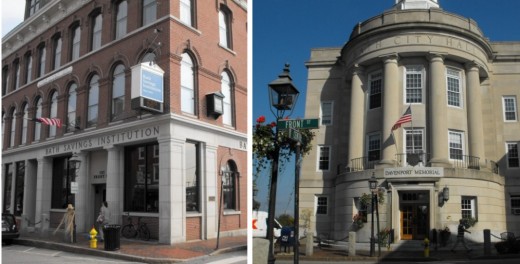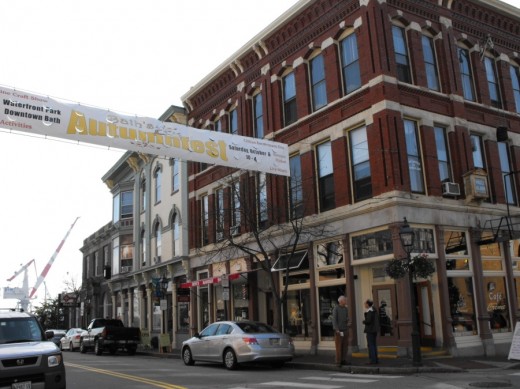Read excerpt from start of this article:
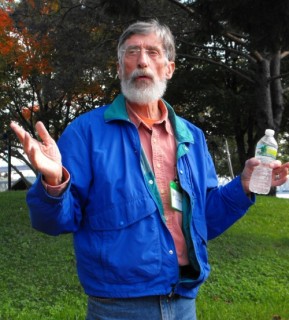
Those are the words recently retired Bath, Maine, planning director Jim Upham used to describe what it’s like to plan in Bath.
Bath is just nine square miles in size, with a population a little under 9,000, bordering the Kennebec River.
As Upham explained to a group of about a dozen visiting planners, “the city as it is today was almost completely built out before the advent of the automobile … this is what makes it so compact and walkable.”
During his years as planning director (from 1996 till last September), Upham told us, there was relatively little new development in Bath. This allowed him to focus on planning, and not face the pressures of constant development review.
As Andrew Deci, who replaced Upham as planning director, added, “One of our job as planners here is what I’d call ‘nominal maintenance’ — keeping things from getting messed up.”
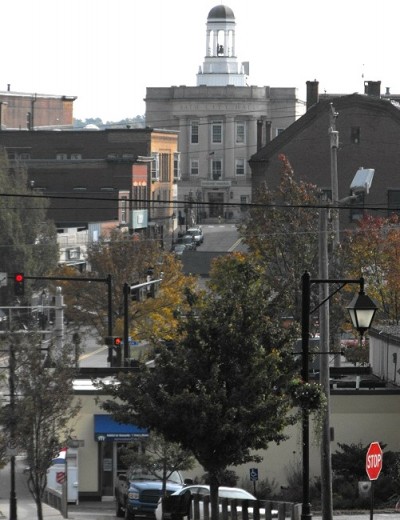
At the center of Bath is a compact, thriving downtown.
In walking up and down Front Street, one can’t help being impressed by the variety of retail establishments, and how well-maintained the storefronts are.
As Upham explained, there’s a bit of good luck behind this. It comes in the form of one family — the Morses — that owns about one-third of the buildings downtown.
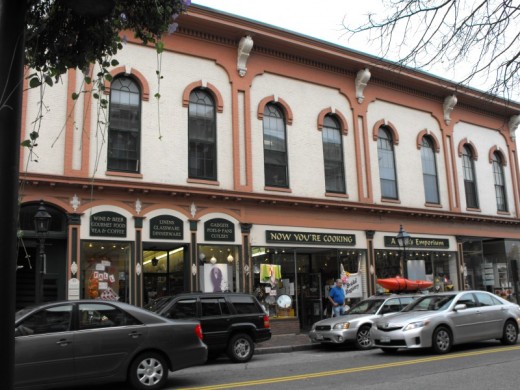
Joshua Moore in a 2010 article in Down East Magazine (“City of Surprises”) focused on this. As Moore reported:
“In recent years, perhaps no one in Bath has been more central to the cultivation of the city’s unique economic mix than Jane Morse. Her family’s Sagadahock Real Estate Association owns eighteen downtown buildings, most of them on Front Street (the street includes thirty-one buildings total).”
As Moore describes, Jane Morse is able to “pick and choose tenants” to get a good mix for downtown, not unlike a shopping mall manager. Morse told Moore “I get tired of the homogenization of America … you can go anywhere and get the same thing. I just don’t like that vision of America.”
Upham’s shorthand for describing the city: “Bath is real.”
Coincidentally, just before arriving in Bath, participants at the Northern New England planning conference had listened to Ed McMahon’s keynote presentation. McMahon is a senior analyst at the Urban Land Institute. One of his central points: the importance of having a distinctive community identity. As McMahon noted, more and more people and businesses are seeing that “sameness is not a plus, it’s a minus” (see my full post about McMahon’s remarks).
Take a look at the short video we’ve inserted below, prepared by Main Street Bath — and notice what it focuses on.
So what are the ingredients that make Bath “real” and “distinctive”?
You must be logged in or a PlannersWeb member to read the rest of the article.
